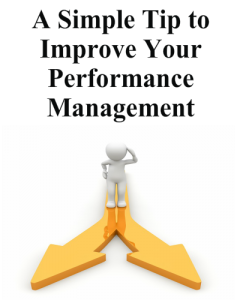2 Things You Need To Do For Your Millennial Employees
Millennials in 2019 are ages 23-38 and their population is larger than the Generation X demographic that came before them. This next generation of managers and leaders are eager and energetic. They are just as critical and important to the workplace today as well as the future.
However, it’s important to note that as a group millennials are not as loyal to employers as other groups. According to a 2016 survey of millennials, 66% of this particular demographic start a new job with the expectation that they will leave in three years. So what is the secret to retaining millennials keeping your turnover low?Current Leadership
One of the most important things to note is that most employees leave a job, not because of wages or work, but instead, it’s the managers that they have.
It’s important to mentor and coach them a way that they both understand and makes sense for the company. A trustworthy and willing leadership team is important to keep your employees.
This is also important when it comes to having regular performance reviews and giving feedback in real time. This might include weekly one-on-ones, daily numbers sent via email, and regular reports given. An annual report will not work because how can someone fix a problem or continue doing something positive if they only hear feedback once a year?
Path To Promotion
A millennial that has at least 6 months of experience is going to feel that they are ready for a shot at a promotion. However, promotions should have a required length for a promotion to be allowed. If you do have a requirement, make sure that expectation is set during the interview so it is clear what will be required.
Most millennials are not going to stay at a job that doesn’t promote from within. Why would they want to start an entry level job with no chance of moving up in the company? Promotions shouldn’t be guaranteed, but based on job performance and given fair opportunities.
Applying What You’ve Learned
Once you’ve figured out what you need to do to keep millennials as employees, it’s important to apply it right away. Meet with your teams and make sure they understand what you will be implementing and get started on a game plan. Let your employees know that you care and what changes will be taking place and you are sure to see a change in morale.
We would love to hear your comments. Please email or contact us today!
Gary Brunson
gary@myclearfocus.com
Debra Rider
debra@myclearfocus.com
574.361.2674
Sustainable Growth & Profit Consultant, Coach, Mentor and Counselor/Therapist for Business Owners and Professional.
Copyright protected by author Gary Sorrell, Sorrell Associates, LLC. All rights reserved worldwide.


 As a leader, you are in charge of many aspects of the job such as communication, strategies, management and more. But, there’s one area where leaders often fail. Unfortunately, these mistakes cost them great employees.
As a leader, you are in charge of many aspects of the job such as communication, strategies, management and more. But, there’s one area where leaders often fail. Unfortunately, these mistakes cost them great employees.